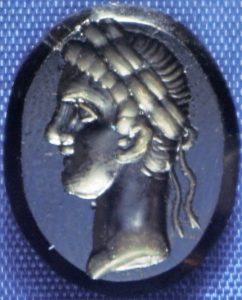Happy Birthday Rome!

21 April 753 A.C.
2.773 ab urbe condita – 2,773 years from the foundation of Rome. Happy birthday Rome, the Eternal City!
The historian Titus Livius, in the 1st century. B.C., recounts the legend of Rome’s foundation. Remus and Romulus decided to found a city in the place where they had been abandoned and later raised. However, an evil force passed down from their ancestors – the lust for power – crept into their project thus, after an uneventful period, a terrible discussion arose between the two. Being twins, no difference in age could be used as a factor to decide who would be king, therefore it was necessary for the gods to indicate who should establish the new city and rule it. The two brothers decided that they would interpret the will of the gods by examining the flight of birds and they placed themselves in two distinct places: Romulus on the Palatine and Remus on the Aventine. Remus first spotted six vultures in flight but, after he had announced it, double the number of vultures appeared to Romulus. Then, those accompanying the two acclaimed both: those of Remus claimed their right to rule based on prioritising time; those of Romulus on the number of birds seen. A discussion arose which quickly moved from words to deeds: Remus, wounded during the riot, was killed. However, another version of the story seems more likely: Remus, after Romulus had founded his city, climbed over the newly erected walls to make fun of his brother. Romulus, blind with rage, killed him, pronouncing these gloomy words: “So, from now on, anyone who dares to climb over my walls will die.”
That was how Romulus obtained power. The newly-established city took its name from its founder and was called Rome.
We wish to celebrate this important anniversary by publishing a splendid artefact from the museum’s collection of Roman finds. It is a profile portrait of a young man with a laurel wreath, carved on onyx for a ring. The man portrayed was, perhaps, was an exponent of the Roman nobility of the late Republican period since the carving dates back to the second half of the 1st century. B.C. We could call it the selfie of the time!
The gem was among the first objects sourced for the museum. In fact, it was acquired by Professor Pietro Vittorio Aldini, founder of the museum in 1820. He was Chair of Numismatics and Antiquities, Diplomatics and Heraldry, established in Pavia in 1818; the most ancient in Italy.
